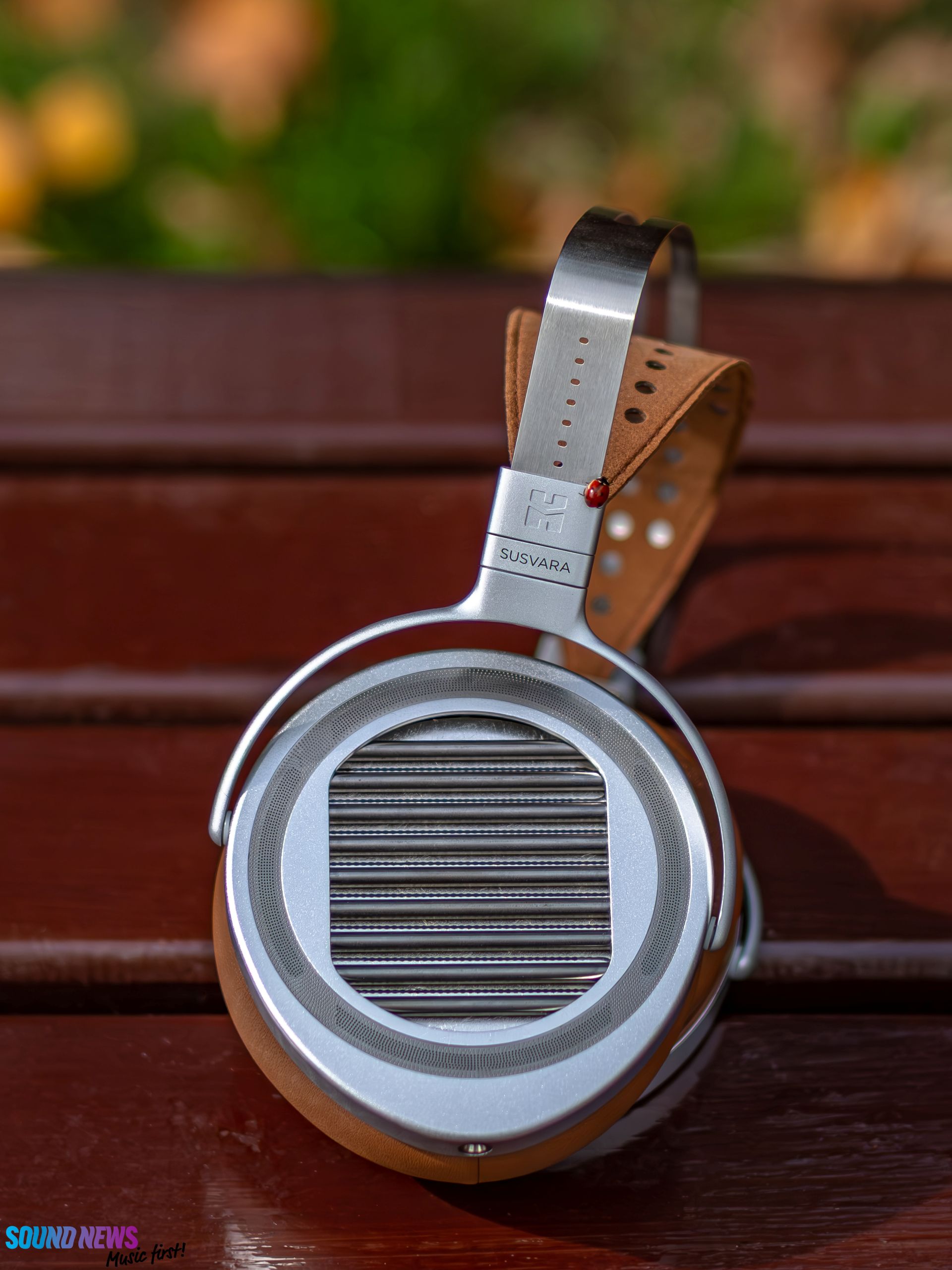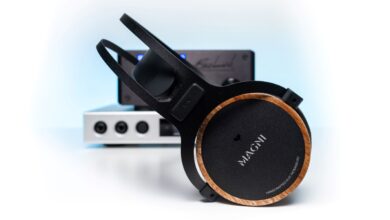HiFiMAN Susvara Unveiled — The Sound of Truth, Finally Revealed

I’ve been neck-deep in headphones for as long as I can remember, cataloging every headphone set from affordable to expensive, every diaphragm and design philosophy as if my ears were filing reports for a secret head-fi agency. Through the years, I’ve witnessed a parade of flagship headphones; some were merely okay, some good, some whispered secrets only true audiophiles could hear. And then, every so often, one comes along that doesn’t just whisper, it challenges the very definition of what a headphone can do.
When I first unboxed the Unveiled, you know the feeling when you open a gift you’ve waited so long for, and your heart pounds so hard you can almost hear it? I’ve got both excitement and fear, and yes, I was fully aware that this headphone could very well humble me or make me rethink the way I’ve been listening to music for the last twenty years or so.
First impressions were… complicated. The Susvara Unveiled is honest to a fault. Stick it on a mediocre setup and you can almost hear it whispering to you: “Really? This is what you’re feeding me?” Micro detail, transparency, and extension are always present, no matter what, but oftentimes the sound feels restrained, like a performer holding back at the start of a symphony. The sound was there, sure… but it didn’t move me yet; it was sound, not music to my ears. The notes lingered for a while but refused to bloom. There was clarity, but not connection with my soul, and for a fleeting moment, I wondered if this was another technical marvel that might never truly sing.
And then, as any serious head-fi aficionado knows, the real work began! This is not the kind of headphone you can judge at first listen. It demands experimentation, patience, deep pockets, and a willingness to rethink your entire chain. With it, you don’t buy a random DAC and headphone amplifier, and then the Susvara Unveiled. You buy the damn headphones first, then build a system around them. I began trying combinations I’d never considered: class-A tube hybrids, fully discrete solid-state rigs, even conventional speaker amplifiers. Each trial revealed a little more nuance. Each tweak put some life back into the music. Slowly, I started to see the light at the end of the tunnel, and the first hints of a great sound began to emerge.
Once properly fed, it will orchestrate an experience for your senses. The tones gain weight, harmonics bloom in unexpected ways, and rhythms that were previously flat now pulse like they have a heartbeat of their own. On the proper setup, the Unveiled doesn’t just let you hear a track; it invites you inside it, making you a participant rather than a spectator. There’s a sense of air, space, and tactile realism that is almost disorienting in the best possible way, a reminder that the pursuit of sound is as much about exploration as it is about enjoyment.
But here’s the thing: this isn’t a story of instant gratification. Susvara Unveiled is meticulous, exacting, even a little merciless. It will expose the shortcomings of your head-fi battle station and occasionally, your patience. And yet, the payoff is so spectacular that any initial frustration feels like the completion of a life goal. This is a headphone that teaches you more about music and your own ears than perhaps any other you’ll encounter.
In the pages that follow, I’ll explore everything that makes the Susvara Unveiled different from its predecessor: the design philosophy, the sonic evolution, the amplifiers that will unlock its full potential, and the subtle quirks that set it apart as an audiophile marvel rather than an ordinary flagship. I’ll test claims, challenge myths, and measure what can be measured, but I’ll also take you along for the ride, because understanding this headphone isn’t just about numbers or graphs. It’s about experience, obsession, and the quiet moments when music stops being something you hear and starts being something you live for.
By the end, I hope you’ll understand why the Susvara Unveiled doesn’t just follow its predecessor; it demands to be experienced on its own terms. And if you’re willing to give it the attention it deserves, I promise: the reward is nothing short of spectacular!
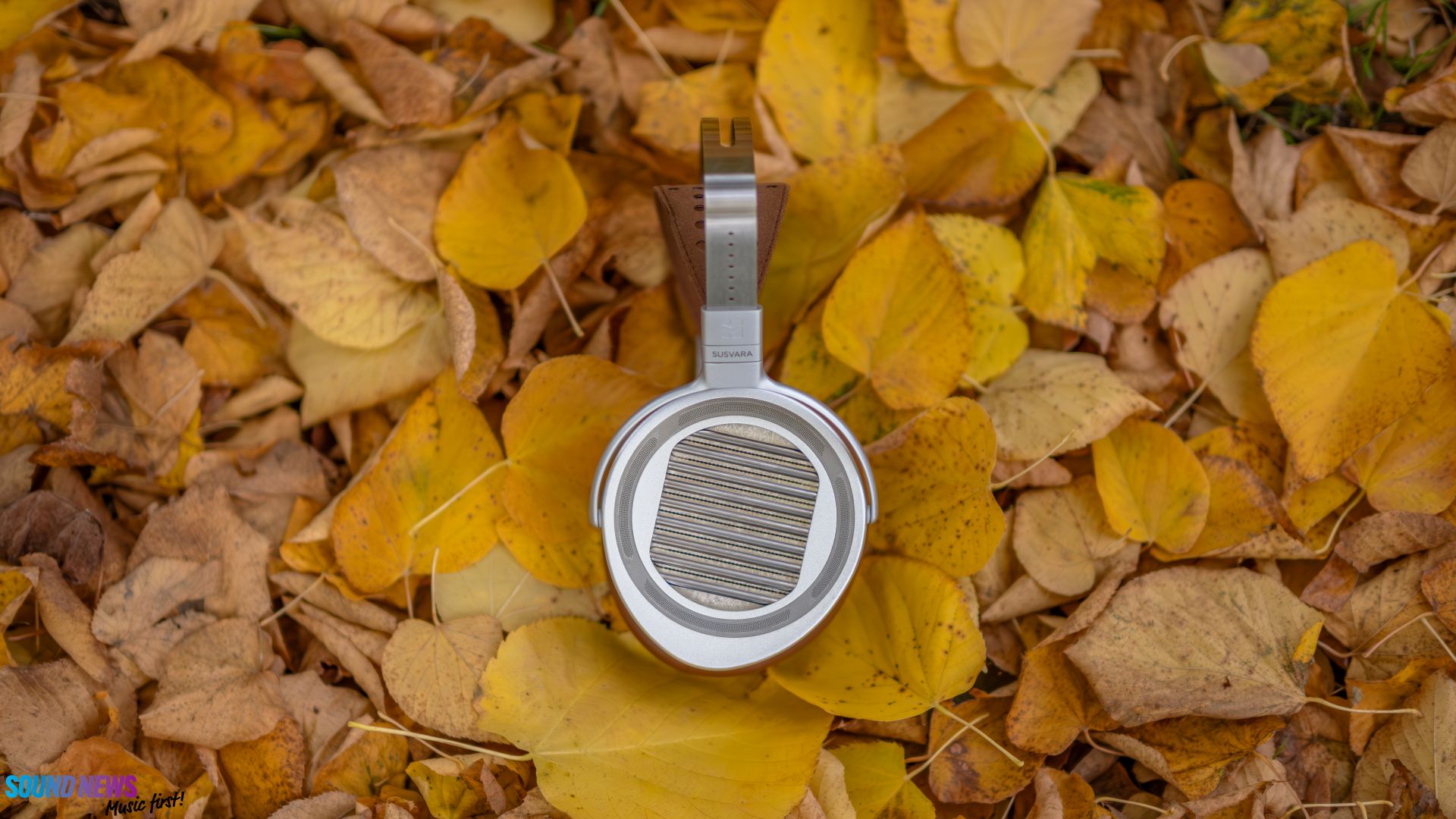
Build Quality & Looks
Before we dive into it, we need to discuss the ginormous hairy mammoth sitting in the middle of the room. It was an elephant back in 2017, but it’s not anymore. The HiFiMan Susvara Unveiled will cost you the prettiest pennies I’ve seen thus far. More exactly $8.000 across the pond and €8000 here locally. It’s the most expensive non-electrostatic headphone you can buy right now. It’s crazy expensive, and as such, I will treat it exactly like a $8000 pair of headphones when discussing its build quality, looks, attention to the smallest details, and, of course, sound characteristics.
Let’s be honest with ourselves: while the original Susvara impressed the hell out of us with the right set of tools, excellent technical performance, and quite probably the truest-to-life sound I’ve ever experienced up to that point, it didn’t impress much when it came to build quality or looks. Sure thing…everything was made out of aluminum, steel, and leather…but they didn’t feel THAT premium in the hand. The Unveiled are more expensive, and yet, we have a similar frame, shape, and material choices. That’s not particularly a bad thing per se. Still, having 7 years to rethink every square inch and material choice, everybody expected more like a revolution in headphone design, rather than an evolution. This was the very first model HiFiMan decided to open up completely, exposing their magnets and extremely thin diaphragms to the elements… unveiling their drivers to the world, hence the name. Nowadays, they already offer plenty of Unveiled variants, from super-affordable to God-tier Susvara Unveiled. Blessed with an infinite imagination, I only hope there aren’t as many Unveiled headphones reaching their service workers with perforated drivers. Only time will tell whether the Unveiled design philosophy was a success.
When HiFiMan revealed the Susvara Unveiled at the High End Show in Munich in 2024 to a minimal number of HiFi reviewers, I honestly didn’t know how to react. On one side, I was thrilled to have a much more open sound (the most open sound I ever experienced?) and a more technical performance all around. On the other hand, I was already picturing hundreds of Susvara Unveiled reaching HiFiMan’s service workers with perforated drivers…because some people aren’t as careful with their headphones as the rest of us are.
Naturally, HiFiMan used the exact Window Shade System found on most of its headphones, featuring a visible, rounded magnet structure. The rounded magnets act as diffusers, bouncing sound in every possible direction, removing unwanted resonances, reflections, and refractions. Since we no longer have a headphone mesh covering the drivers, the sound is as open as it can be, working almost like tiny speakers. Nothing is stopping the acoustic waves behind the driver from leaking out, and people around you should prepare earplugs, as these will leak a lot of sound outside their cups, more so than regular open-back headphones do. This clever design unlocked an extraordinarily open, acoustically transparent sound, boosting their sound staging capabilities to the next level compared to the Susvara OG.
The hybrid earpads, with leather on the outside and soft fabric where the skin is in contact, aren’t a novelty anymore, but I really enjoy the extra padding that could potentially increase the soundstage. These are asymmetric and follow the shape of the human ear, comfortably distributing weight evenly while offering a nice grip once a listening session begins. Interestingly enough, they seem to have the deepest earpads I’ve seen on HiFiMan headphones, and the latest iteration has them exactly as thick as those on the original Susvara.
Their metal structure was created via CNC milling and hand polishing, and you can feel it when you hold them and closely inspect their earcups. You can feel the extra care and the fine-grain polishing that went into applying a matte silver paint.
So far, Susvara OG and Unveiled are the best-looking HiFiMan headphones, and there isn’t much else to add in here. The only thing we no longer have on the Unveiled is the wood veneer that could be damaged over time. Right now, they look less striking, but shinier with so much metal wrapping their entire structure and earcups. For a pair of planar headphones, they weigh little to nothing with the veils removed. At 430 grams, they are also 20 grams lighter than their predecessors, which slightly improves comfort during long listening sessions.

Comfort Level
Speaking of which, we have the plushiest and softest earpads that HiFiMan has ever created, and a similar headband to the original Susvara that was never a burden long-term. We can agree to disagree on many things, but when it comes to sheer comfort, the Unveiled, together with the OG, all HE1000 variants, Meze Elite, and Sennheiser HD800, are among the most comfortable headphones to rest on my melon.
The headband is again perforated, and that’s a big plus when listening in the summertime with a tube amp nearby, warming up the atmosphere. While my ears get sweaty with a lot of open-back headphones and with most closed-backs, I never got sweaty ears with the Unveiled. I tried quite a few third-party earpads by now that were supposedly improving the comfort and sound performance, but I still believe the stock earpads provide the most balanced sound while never making me uncomfortable long-term. They fit snugly around my head and provide plenty of padding, putting minimal pressure on my ears. In their stock configuration, there was higher side pressure, but once I adjusted them to my head size, everything returned to normal.
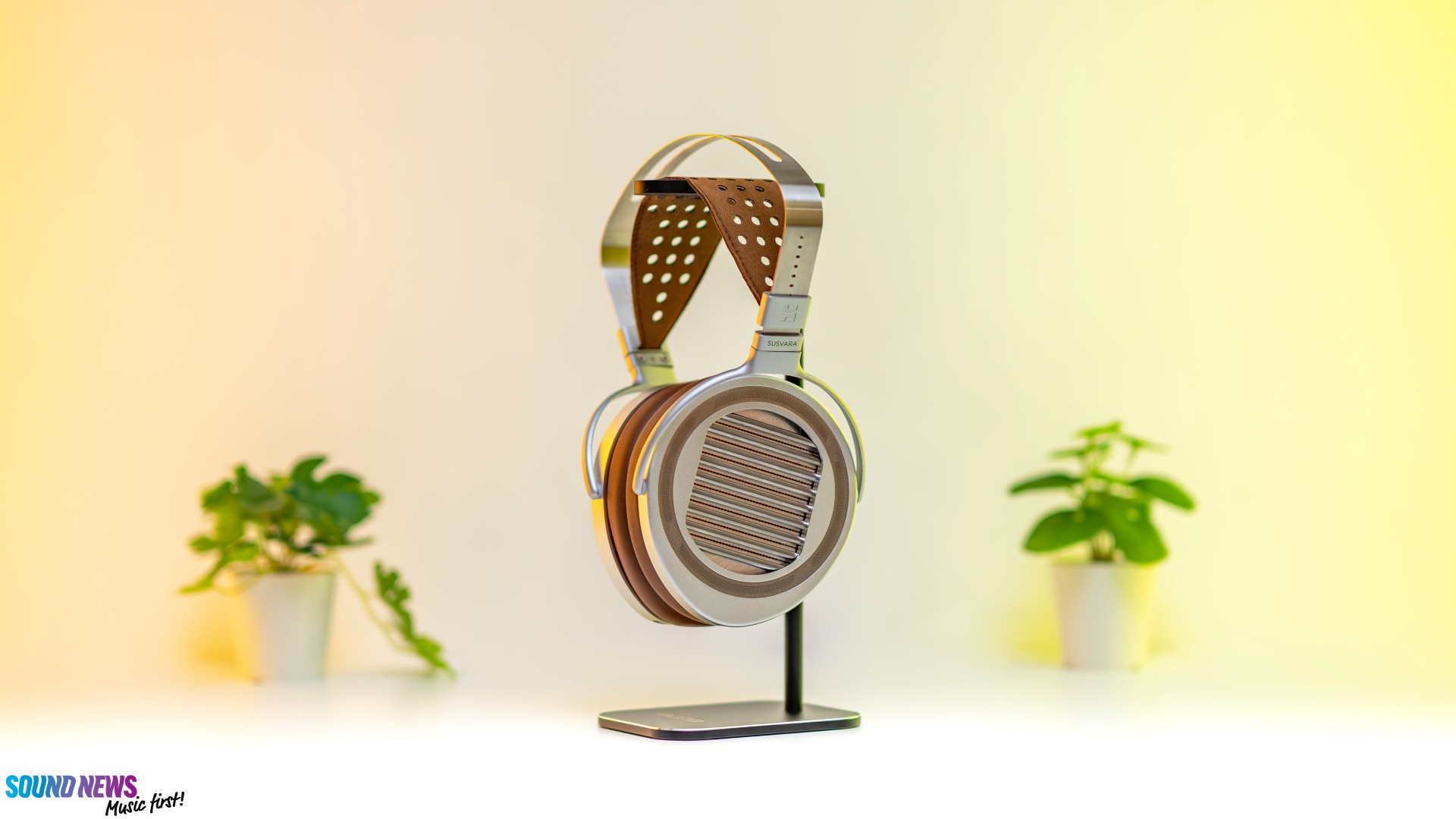
Unveiling the Tech Inside
The Susvara Unveiled are HiFiMan’s flagship open-back planar-magnetic headphones, using smaller drivers than their Arya and HE1000 models. That was done on purpose, as smaller diaphragms are much easier to control when dynamics are going wild. The thickness of Susvara’s diaphragm is under a millionth of a meter, making it highly responsive to a powerful magnetic flux. Their incredibly light, high-tensile-strength material, together with acoustically transparent Magnets, work as Ying and Yang, complementing each other and achieving a perfect harmony.
As for the magnets themselves, HiFiMan developed acoustically invisible stealth magnets that reduce the wave diffraction turbulence, which can degrade the integrity of the sound waves. The result? Lower total harmonic distortion yields a purer, more harmonious sound. Unlike the sound waves generated by conventional magnets, the rounded shape of stealth magnets allows them to pass through acoustic waves without generating interference, resulting in a more transparent sound. After releasing the Susvara in 2017, HiFiMan slowly but surely included these magnets in some of their more affordable headphones, and you can now spot them everywhere…even on competitor headphones.
The Unveiled design removes all unwanted acoustic waves outside its cups, improving the perception of a breathable sound that spreads widely in all directions. As with all newer-generation HiFiMan headphones, you’ll find 3.5mm connectors in their earcups, making them highly versatile with third-party cables.
You’ll find two detachable cables in the package, featuring monocrystalline copper and pure silver conductors, making them among the best cables HiFiMan has ever made. Luckily, we no longer have the “condom like” look and texture of the original Susvara cables, choosing instead a much stealthier black textile mesh that’s both soft and very flexible. If you want to invest in third-party cables that use better conductors (say, single-crystal pure silver conductors), then the sky is the limit. There are a ton of headphone cable manufacturers nowadays, some are more boutique than others, but expect to pay a premium for them.
Perhaps the most significant improvement we saw on the Unveiled is a lower 45 Ohm impedance, but, more importantly, a much lower sensitivity of 86 dB per 1 mW of power, as opposed to 83 dB on the original Susvara. This small change had massive positive repercussions: you no longer need to own the biggest, heaviest, and most powerful amplifiers to unlock their full potential. However, you need to be realistic; these are indeed easier to drive versus the original, but they’re not a walk in the park, as some of you might think. I won’t recommend using USB dongles or Bluetooth thingies with these, nor would I use portable DAC/Amp combos or portable digital audio players, with only a few exceptions, of course. They still demand a ton of power, but more importantly, they require clean, unspoiled, high-quality power, ideally biased into Class-A operation without negative feedback for the most natural sound. This review has been 10 months in the making, as I needed to test them with as many headphone amplifiers as I could to understand them better and squeeze the last drop of performance out of them.
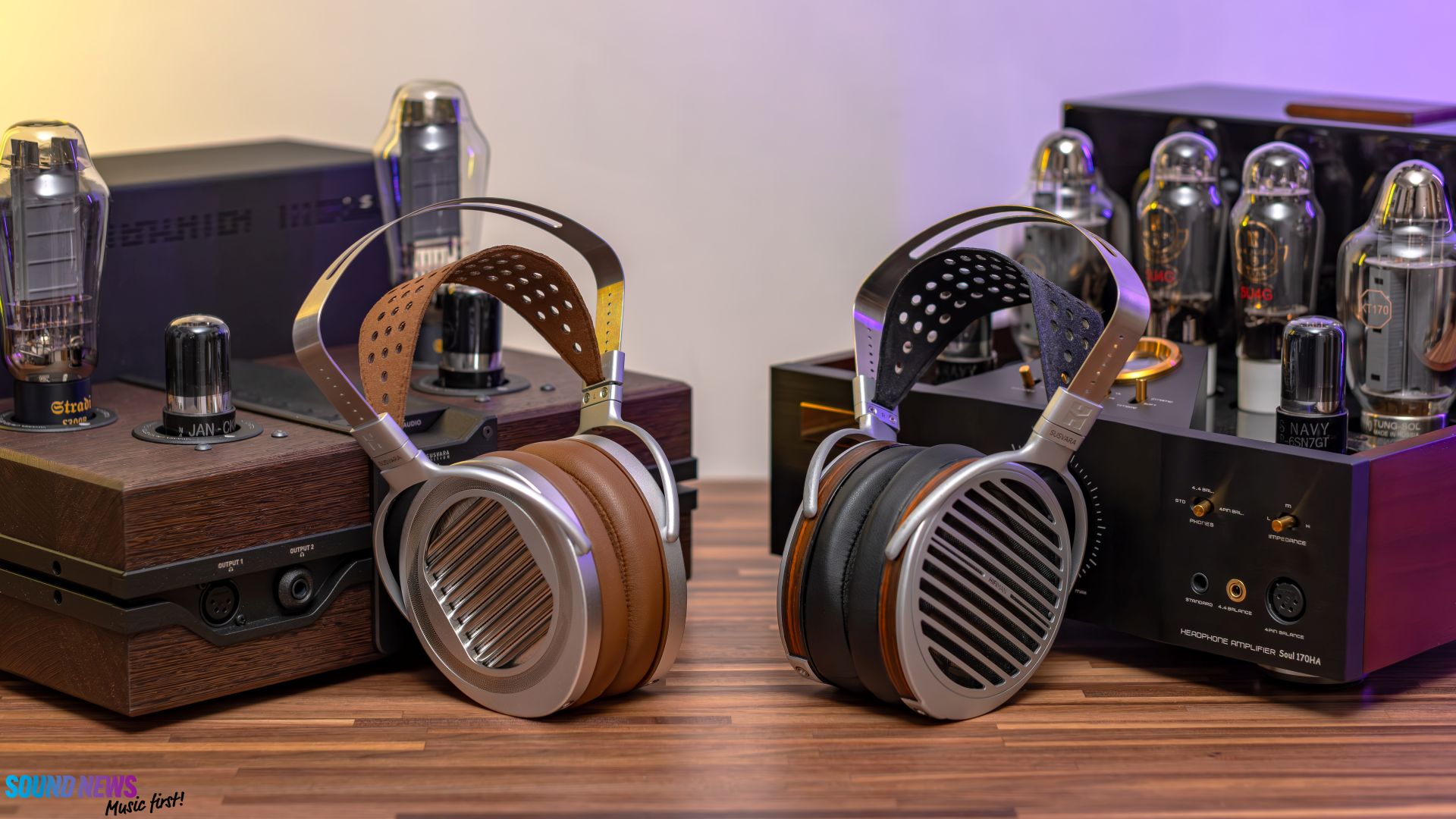
Test Equipment
A flagship pair of headphones will need a flagship headphone setup to shine at its best, and that’s why I went overboard with electronics. I used a Rockna Wavedream NET 4 TB ($11.000) music server filled with DXD and DSD content, which also worked as a Roon server connected to streaming services such as Qobuz and Tidal. A Rockna Wavedream Reference Signature DAC ($26.500) followed, and then a couple of headphone amplifiers of a similar quality. The marvelous Feliks Audio ENVY Susvara Edition ($16.000) is supposed to squeeze the last drop of performance from the Susvara OG, let alone from the Unveiled, and I’ve used this one most of the time. I also used a Cayin Soul 170HA ($8500) and a Burson Soloist Voyager MAX ($4800) to strengthen my initial impressions. All cabling used was Crystal Cable Monet grade (power, interconnects, and Ethernet). A KECES IQRP-3600 balanced power conditioner powered everything mentioned above. With that out of the way, I’m ready to hit some eardrums!

Sound Performance
I. Preliminary Impressions
Let’s pause for a minute and focus on my journey through the ranks of the planar mafia. I’ll bypass my early days with orthodynamic headphones like the Amfiton TDS-15 back in the late 90s and focus on the resurgence of planar headphones in the late 2000s and early 2010s. It all began with the original Audeze LCD-2, which gradually pushed me away from my Sennheiser HD800 and Beyerdynamic T1, both of which I still used at the time. There was something about the Audezes that made music sound just right for me – it wasn’t solely about the frequency response, as some might assume. There was a tangible sense of physicality I didn’t experience with the Sennheisers; it wasn’t just about hearing the music, but also about feeling it. For the first time, I felt my eardrums vibrating to modern music. The engagement factor skyrocketed, even as I was coping with the added weight and discomfort.
Soon after, HiFiMan creations slowly began appearing on my desk. I tried the HE-560 first, then the Arya OG, and finally the HE1000. The turning point, however, was the moment when I tried the Susvara OG. I couldn’t believe my ears…how much additional information was still waiting somewhere in there to be explored, to be heard, and cherished. My first encounter with the Susvara wasn’t a very pleasing one, mostly because nothing I had on my table was capable of unleashing their full potential. I then started juggling with various fully discrete amplifiers, some of which were designed explicitly for the Susvara. I then tried a couple of transformer-coupled SET amplifiers and more than 10 stereo amplifiers with them. Slowly but surely, the Susvara changed the way I look at HiFi headphones, and many headphone amplifier builders saw an opening, an opportunity to develop more powerful amplifiers. Today, driving the original Susvara is no longer a mission impossible as it was back in 2017. Today, we have many solid-state amps capable of unleashing their best. If you don’t want to overspend as much as I did, from the solid-state flock, an Enleum AMP-23R would be my top choice, followed by the Burson Soloist Voyager with or without the Fusion Core power supply. The LAiV Harmony HP2A was also capable of unleashing Susvara’s full potential, with a small caveat: it sounded considerably better with a DAC capable of outputting hotter signals, such as 7.5V or even 10V via XLR. Moving on to transformer coupled amplifiers, the stronger kicks still offered the Cayin Soul 170HA with its 18 Watts per channel, the Feliks Envy Susvara Edition is, however, playing in a higher league, not only in terms of how transparent and clean it paints the music, but also when conveying the music’s tone and timbre…There’s just more of everything on the Envy Susvara Edition. And if we combine the punchy nature of the Soul 170HA with the refinement and beautiful overtones of the Envy Susvara Edition, then we arrive at the Trafomatic Primavera, which is also a top choice for the world’s best planar headphones.
I have experimented with more than 30 amplifiers of all sorts on the original Susvara…and when the Unveiled was revealed, I already owned some of the best amplifiers out there, and I knew exactly what would make them bloom, infuse the right amount of energy, and energize their diaphragms to excess.
Making the original Susvara alive, dynamic, and hard pounding wasn’t a task for the faint-hearted…You needed to be brave, patient, and curious, and only then, after countless experiments, could you make them sound incredibly dynamic and punchy, so much so that everything else on my table felt like distant echoes in comparison to the immaculate performance of the mighty Susvara.
Alrighty, but how about the Susvara Unveiled? What makes it different, what makes it desirable, and why it exists in the first place?
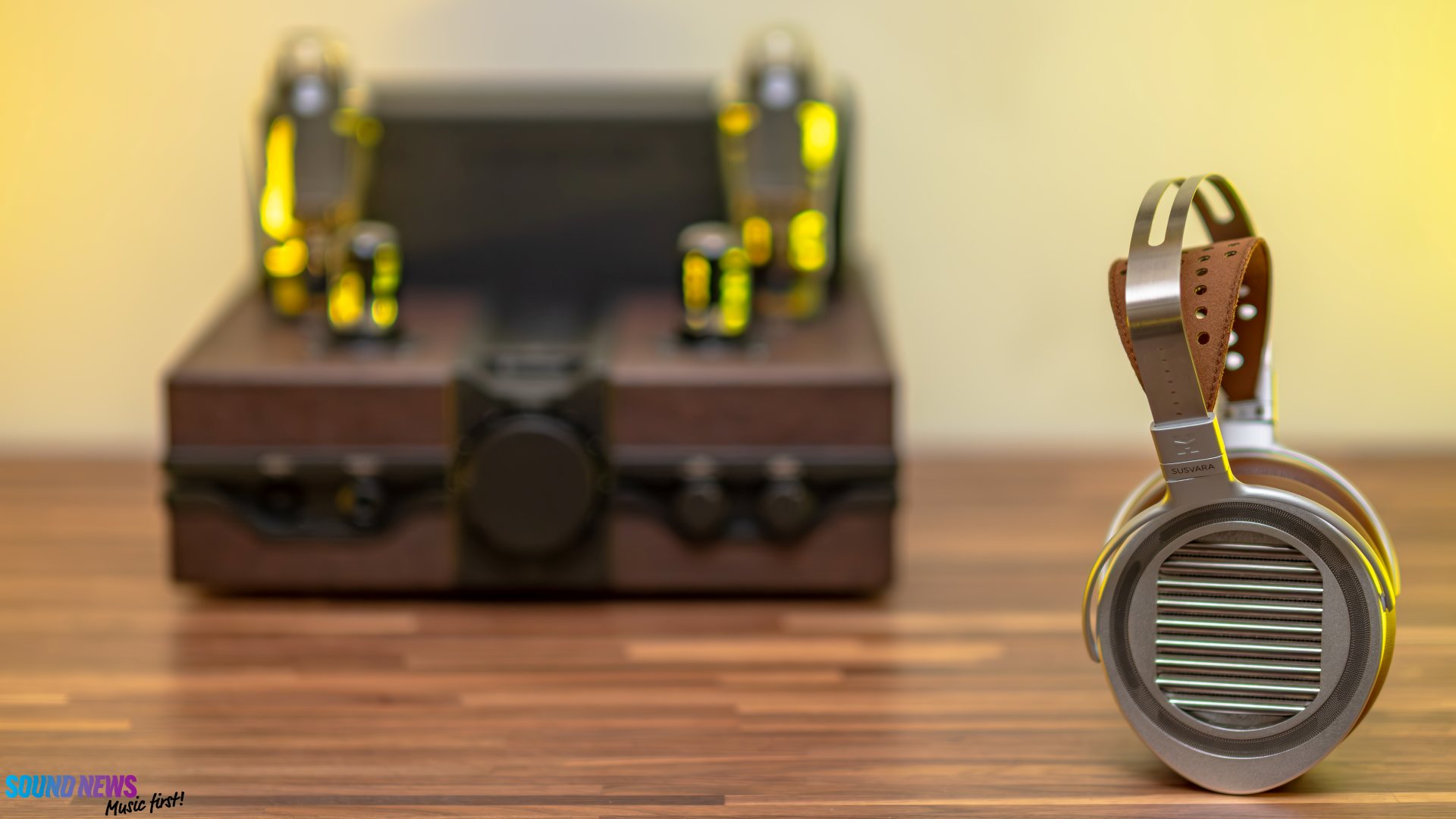
II. Power Requirements & Amps Pairings
There are many individuals in this hobby, usually younger folks who believe loudness equals well-driven. But that’s not how acoustics works. Arriving at a loudness of 100 dB and sounding great at 100 dB are two different concepts. Sounding loud doesn’t mean the headphones or the speakers are receiving everything they need to sound at their best. There’s a reason affordable and expensive amplifiers exist. And no, it’s not only about how much power they offer, but how clean and distortion-free that power is. And let’s not forget the working principles: a high-bias Class-A amplifier with a similar power output to a Class-A/B amp will sound considerably more effortless, liquid, and organic, traits that no oscilloscope or audio analyzer can measure.
I feel sorry for people who drive their expensive headphones with a USB dongle, or worse, with a Bluetooth dongle. Some well-made portable DAPs are already good enough to be compared with a few desktop combos, but a well-put-together desktop rig would sound like you’ve never experienced real music before. Nobody likes to spend thousands on better sound; however, I’m glad the lucky few offer such a choice. There’s always an upgrade path, and given how much more technical the Susvara Unveiled is compared to the original, the rabbit hole could go much deeper with the newer model.
I use several portable digital audio players daily, and some of them (like the HiBy R8 II) are decently driving the Susvara Unveiled… but don’t expect playful bass delivery or layer upon layer depth and stereo separation, as that isn’t going to happen. If you like to play with portable DAC/Amp combos, from the ones I tried, only the xDuoo XD05 PRO and the FiiO Q7 will show you the light at the end of the tunnel, sounding lively and, dare I say, punchy on several occasions.
However, if you had the money to buy the Susvara Unveiled, you would need to be prepared to pay at least as much for a standalone DAC and headphone amplifier. If you don’t like overspending and fiddling with tubes, get Burson’s Soloist Voyager (ideally the MAX package) and call it a day. It’s a marvelous-sounding amplifier…and those EXICON MOSFETs biased into a deeper Class-A mimic the sound of vacuum tubes so well that sometimes I forget that the Soloist Voyager plays instead of the ENVY. The Enleum AMP-23R and the LAiV Harmony HP2A also use EXICONs, and yes, I find them considerably more balanced and natural than any other type of transistor. At the moment, these amplifiers would be my top choices.
However, if you are as stubborn as I am, you don’t like half measures and you will do whatever it takes to squeeze every drop of performance from the Unveiled…then prepare to pay a premium as the Cayin Soul 170HA, Traformatic Primavera and Feliks Audio ENVY Susvara Editions are all shooting for the starts, able to show you precisely why you paid a premium for the Susvara Unveiled in the first place. The absolute best from these three? The ENVY Susvara Edition is so far my number one amplifier, and it might sound out of place, but I don’t remember hearing so much music, so many details on the micro scale, and so many layers of music as I do on the ENVY Susvara Edition. Pardon me if I’m wrong, but the Envy Susvara Edition and Anniversary Editions are the only amplifiers that use Lundahl’s amorphous core transformers, which had a tremendous impact on sound’s transparency and detail retrieval. A regular transformer (usually made with silicon steel or grain-oriented silicon steel) has a crystalline structure. That means the iron atoms inside are arranged in neat, repeating lattice patterns. Sounds organized, right? It is, but it also causes a problem: the magnetic domains (tiny regions where atoms align magnetically) resist change when the magnetic field varies rapidly. This resistance to change is called hysteresis, and it’s one of the main reasons transformers can sound slow, muddy, or veiled. An amorphous core, on the other hand, is made of a non-crystalline (amorphous) alloy, typically iron with some boron and silicon, rapidly cooled from molten form so that its atoms don’t have time to form a crystalline lattice. The result is a random atomic arrangement, more like glass than metal.
This atomic chaos gives the amorphous core its magic; the transformer responds more quickly and accurately to signal changes, reducing Eddy Current loss, further extending the sound’s frequency response, and improving linearity at low listening volumes. In layman’s terms: if you want the best…this amp sits at the very top.
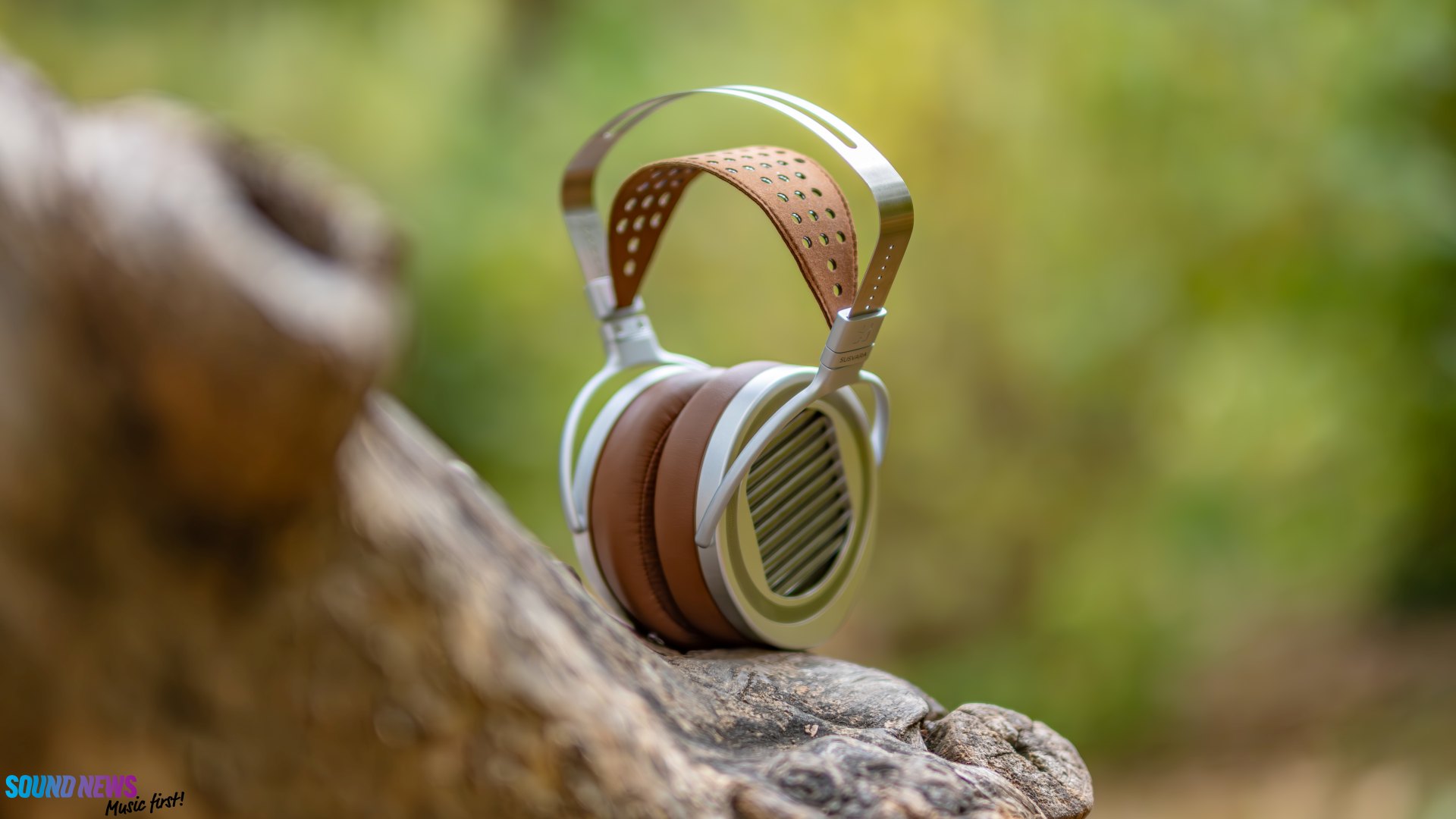
III. Detail Retrieval & Sound’s Transparency (Part One)
When I first heard the original Susvara, I immediately realized that my (now sold) KEF Reference 3 loudspeakers couldn’t offer similar transparency levels, nor did they show the beautiful overtones with such effortless ease… they sounded muddier, less resolving, and I couldn’t accept that. The Susvara OG was seriously outperforming my speakers, even though they were 2.5 times more expensive, and for at least 3 years, the Susvara were unbeatable at their own game. Most of my DAC reviews were made with the Susvara… as it was able to show the tiny differences in detail, dynamics, and low-level information. I used it more as a tool to assess the performance of the DACs and headphone amplifiers that came in for review.
Then, out of the blue, I’m invited to casually listen to the T+A Solitaire P in a random booth at the HIGH END Show in 2023. I was shocked to hear so much detail (once again) and such a mesmerizing transparency…And the stage? Vast and massive, completely enveloping my head. I bought them one week later, and after back-and-forth comparisons with the original Susvara, I realized that the T+A Solitaire P are just more technical, more tactile, faster, and more precise-sounding than the precious Susvara OG. The only thing the Solitaire P lacked in a direct comparison was midrange purity, which blossomed more on the Susvara. The voices were a bit metallic-sounding on the Solitaire P and just magical on the Susvara. I kept on using both for both pleasure and work, and I still use them today with the same enthusiasm.
When the Susvara Unveiled arrived…to be frank, I didn’t unpack them right away, and I believe only on the weekend, I gave them a listen, and that was the moment when I realized that the Solitaire P are no longer the reigning champions of micro-detail. The King is Dead, Long Live the King!
And just like that, the newest model single-handedly outperformed the long-ruling kings of transparency and low-level information. Yes, there is a bit more information coming to the surface with the Unveiled when used with a great head-fi setup, and considerably more with a legendary DAC and headphone amplifier, and equally impressive interconnect cables. My Raidho TD2.2 is still unearthed… just a little bit more than the Unveiled, but they also cost an arm and a leg.
From the headphone kingdom, the Susvara Unveiled will probably reign for a while longer, and that’s fine. That price point needs to be justified one way or another, and if you need the highest-resolution headphones, you are reading the right article, my friend. A mere bill of materials can’t justify its price; there are many years of trial and error behind it, years of research and development, years of knowledge poured into these creations…things that you can’t measure, but you can hear once music starts doing its mojo.
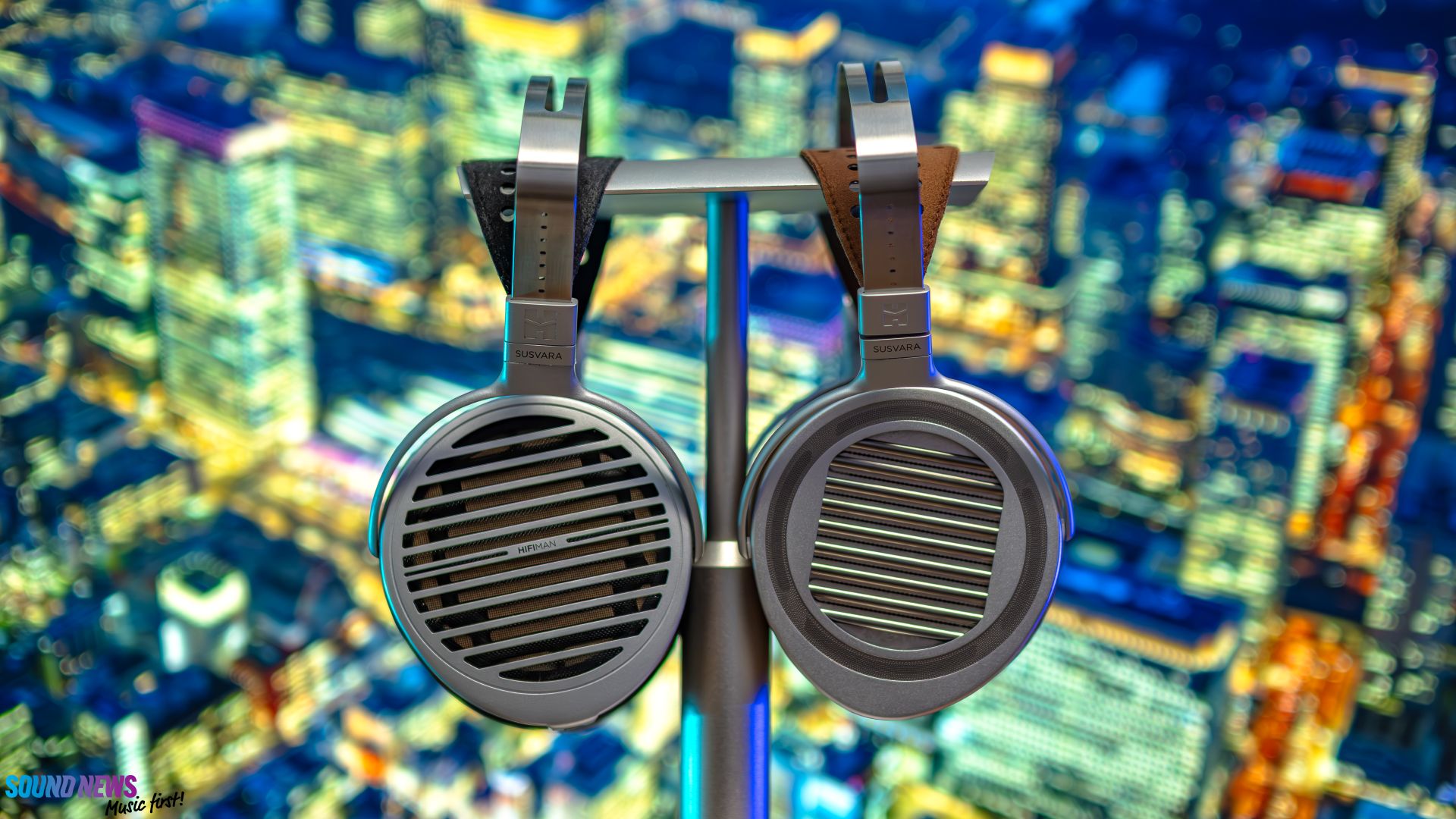
IV. Transient Response & Dynamics
I’m a dynamics addict, a transient response guy that deeply cares about this stuff. I’m getting bored by slow and mellow-sounding headphones, not because they sound like that, but because they can’t stop on a dime when music demands it, and they can’t accelerate and decelerate a musical note in an instant. You know why a hypercar costs so much more compared to a regular car? Because everything was pushed to the extreme: acceleration, speed, braking, safety, material choices, and of course, research and development. A regular car won’t do 100 Km/h (or 60 Mp/h) in less than 3 seconds, nor will it brake almost instantly. A hypercar, however, will push it to the extreme. There’s a reason we have a hyper prefix, right?
Figuratively speaking, these performance metrics can be attributed to headphones and loudspeakers as well, since their drivers also exhibit excursion (acceleration), impulse response (speed), and decay (brakes), or, as a whole, the transient response.
Discussing dynamics, though, is a controversial topic on the Unveiled, as it was on the original Susvara, and please allow me to explain. You see, the top of the headphone kingdom is, unfortunately, not very efficient. Most of these top-of-the-line cans use rigid drivers with much higher tensile strength to resist powerful dynamics and long back-and-forth excursions, with one caveat: rigid drivers aren’t easy to move. They need the proper amount of current to start moving freely, and that’s precisely why on less impressive amplifiers, both Susvara variants could sound ethereal, lacking body in the midrange and weight in the lowest octaves. In contrast, a high-current amplifier, biased into deeper Class-A operation, will allow drivers to move freely without ever limiting their movements. Only then will the Unveiled spread their wings and show why they’re ruling supreme.
On the right amplifier, the Susvara Unveiled gains an immaculate transient response, thus improving dynamics to an almost unrecognizable level. Some might get the idea that the Unveiled are lacking bass energy, midrange bloom, and find them overly excited in the upper treble – a clear sign of an amplifier running out of steam. On the other side, seasoned headphiles already know how much attention these deserve when it comes to amplifier matching. We already learned our lessons the hard way, first with the HE-6 back in 2010, then with the Susvara much later on, HE6se, then Susvara Unveiled, and recently HE600. Low-sensitivity headphones will always exist, as long as there’s a market for speedy, punchy, and incredibly tight-sounding headphones. And if you crave some of the fastest and tightest-sounding headphones out there, then both the Susvara variants can deliver the right pace, rhythm, and timing, as long as you keep them on the proper diet.
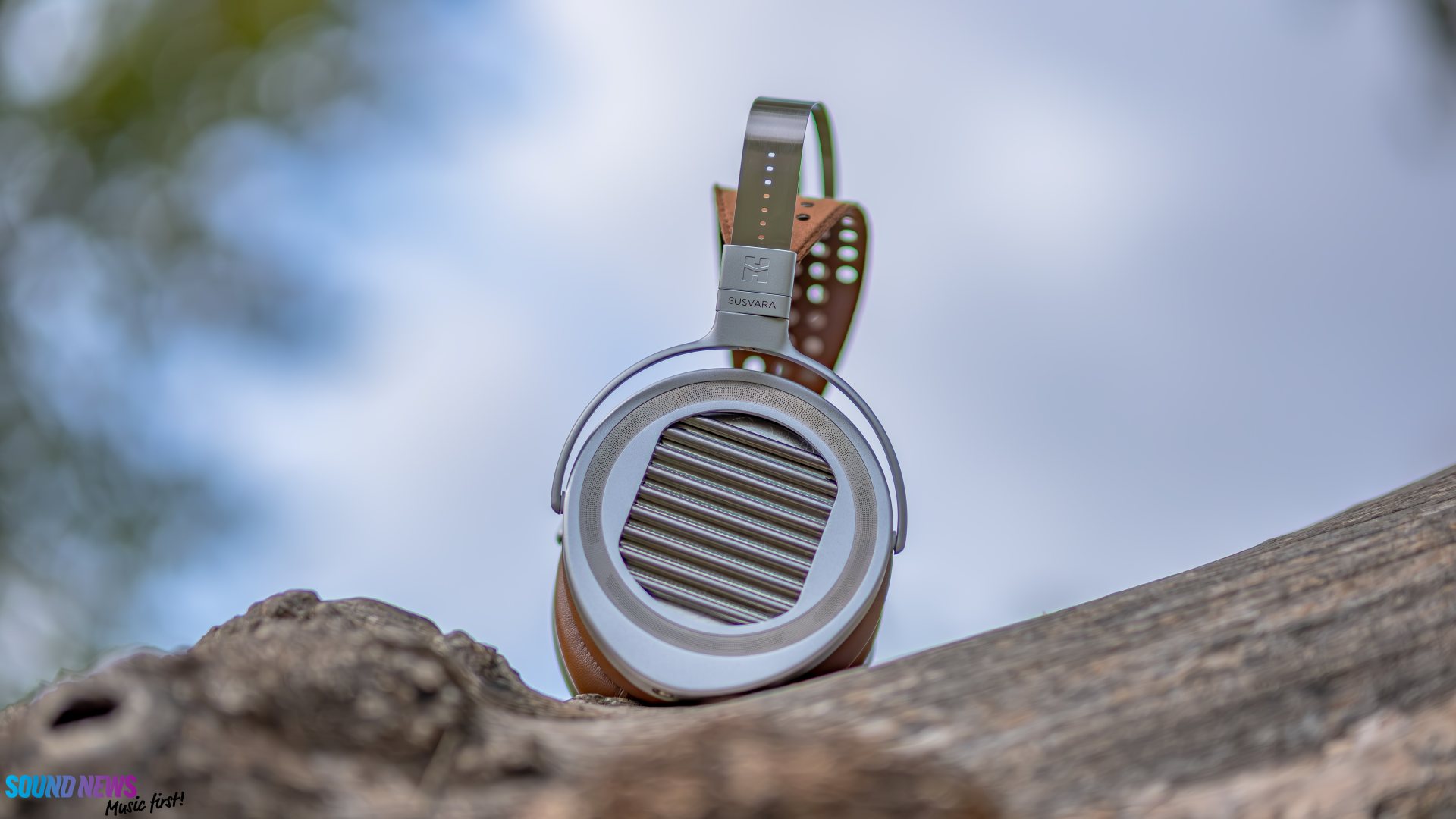
V. Soundstage & Imaging
In my humble opinion, besides becoming the hardest to drive pair of headphones, the original Susvara had another Achilles Heel. With smaller drivers than its Arya and HE1000 variants, the Susvara couldn’t compete with its more affordable siblings when it came to portraying a vast soundstage in front of the listener. Sure, it was imaging like crazy, placing the sounds precisely all around you, creating a 3D map of your music. Sure, there was an excellent layering that separated the sounds from one another, adding a sense of depth as if we were no longer listening to ordinary stereo tracks but to binaural music. However, as much as I would like it to shoot a grand scale in front of me, that was rarely the case, and more affordable headphones with bigger drivers easily pulled ahead. The no.1 rule in acoustics is simple: if you dream about big sounds, get speakers with bigger woofers, and if you need even a bigger sound than that, then once again get even bigger woofers. Sky and your wallet’s depth are the only limiting factors, and the same applies to the headphone kingdom, not just HiFiMan but every headphone manufacturer out there.
There is, however, another cause-and-effect at play that I’m sure HiFiMan engineers heavily weighed the pros and cons while developing the original Susvara and then the Susvara Unveiled. Sure, you’ll get a bigger sound with a bigger driver, but then a problem arises: a bigger driver will have a more extended excursion (a longer travel of the diaphragm), a longer rise and a longer decay of the notes, ultimately slowing down the pace, limiting the transient response and adding a bit of distortion, since the driver starts slowly deforming at higher SPL. I remember discussing a similar matter with Lars Kristensen and Michael Borresen of Audio Group Denmark. I asked why the Borresen top-of-the-line M-series of loudspeakers never use bigger woofers than conventional HiFi speakers. Lars and Michael explained that it’s all about the attack, speed, and decay —transients, in a single word. They decided to never use woofers larger than 5” in the flagship speakers (the M6 retails for $550.000), and subsequently, the M1, M3, and M6 all use 5” woofers. That’s precisely what’s happening with the Susvara lineup, and that’s possibly the reason many others shrank the size of their headphone drivers (Audeze LCD-5 comes to mind, too).
HiFiMan engineers didn’t want to compromise the technical performance of their flagship drivers, so they came up with a clever solution: the veil system, which (un)surprisingly improved the scale of music, further decompressing it on all axes, and also considerably sharpened the stereo image. What was already focused on the original Susvara became laser-precision focused on the Unveiled. What was clear and utterly detailed became ruthlessly clear and outlined. So much so that I believe many years will pass before the competition will start catching up. I wish more would think outside the box and develop something unique or downright courageous, like HiFiMan did. Acoustically, the veil system feels like a significant success, both in objective (as measured) and in subjective (as heard) performance, the Unveiled is just bigger sounding on all axes by at least 20 to 25%, with the only caveat that the drivers are 100% exposed to Earth’s elements… and also to baby bites, cat scratches and dog licking. Seriously now, if you’re investing in the Susvara Unveiled, after a listening session, put the veils back on and, ideally, hang the headphones on a wall (as I do), and everything will be just fine for ears and years.
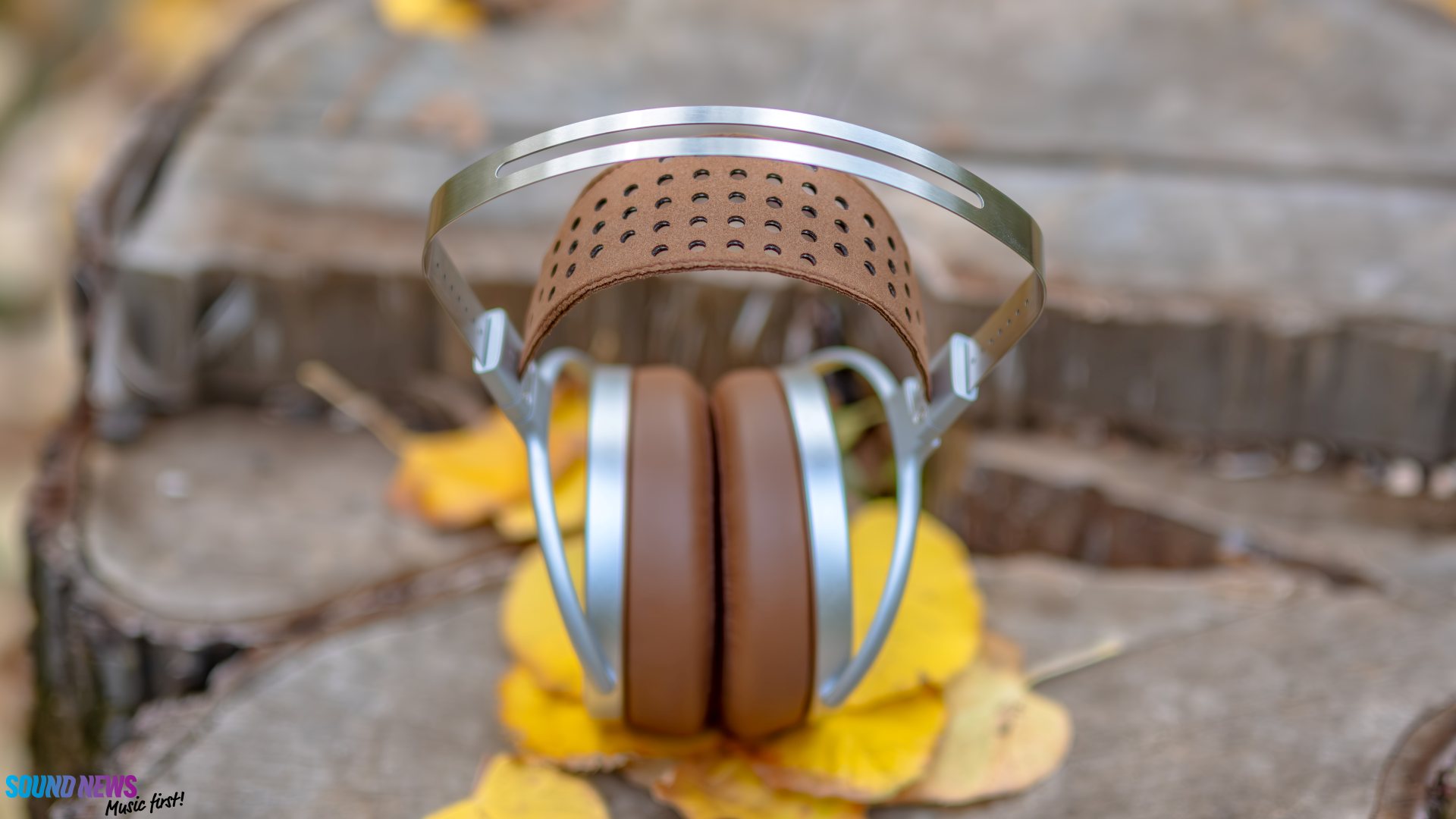
VI. Detail Retrieval & Sound’s Transparency (Part Two)
I feel that this chapter shouldn’t exist on a “Susvara” review, and it definitely shouldn’t be the fifth chapter, but the first one. The no.1 reason you are already bargaining yourself to get the Unveiled is because you want to experience the Truth. How much more is there hiding behind your tracks? Was that a whisper, someone inhaling air in their lungs, a car passing by the recording studio, or just a mastering error? I’ve asked these very questions so many times by now. The only things that kept me trying new stuff: new speakers and headphones, new DACs, and electronics in general —are the questions I just mentioned. What if there is more to be explored and heard? What if I can dive deeper into the recording and uncover something new, something unheard of?
Ladies and Gentlemen, all of these questions vanish with the Susvara Unveiled, driven by a top-of-the-line amplifier that receives the analog signal from an equally impressive DAC and digital or analog source. There isn’t a truer-to-life-sounding pair of headphones, and I believe notions such as “natural,” “organic,” “dark,” or “bright” … vanish on the Unveiled. It’s no longer about a mere frequency response or technical performance; it’s about not hearing the sounds anymore; it’s about experiencing music in its truest form…with all of the previously unexplored stuff.
About two months ago, I rediscovered a new hobby: collecting CDs and SACDs (including rare editions), and, to be frank, I have never been happier in my life. I’m using an ONIX XST20 CD and SACD transport that feeds a Rockna Wavedream Reference Signature DAC via I2S. Let me tell you that the music I knew for a lifetime…never sounded more palpable, more real, and closer to my heart. I’m rocking a world-class streamer and an equally impressive HiFi Switch (the shock-and-awe!). Yes, HiFi streaming can get pretty addictive and sound quite legendary, but it’s nowhere near the quality of a simple $8 CD, let alone SACD. The timing. The detail. The transparency… was all breathtaking, and that’s the sole reason I needed to edit some of my videos on weekends: I was listening to so much music and (again) discovering new things I never knew were there. But I slowly realized that without the Susvara Unveiled, I would not be able to hear the unspoiled truth or the absolute last bit of information.
At this very moment, I’m no longer wondering if it was a whisper, a car passing by, or a mastering error. Everything is laid out before my eyes, yes – eyes, not years, as when the sound becomes so real, so vibrant and alive, you start seeing it in front of you. All of the layers, all of the musical instruments, and all of the musicians. Resurrected to play once again in the comfort of your home.
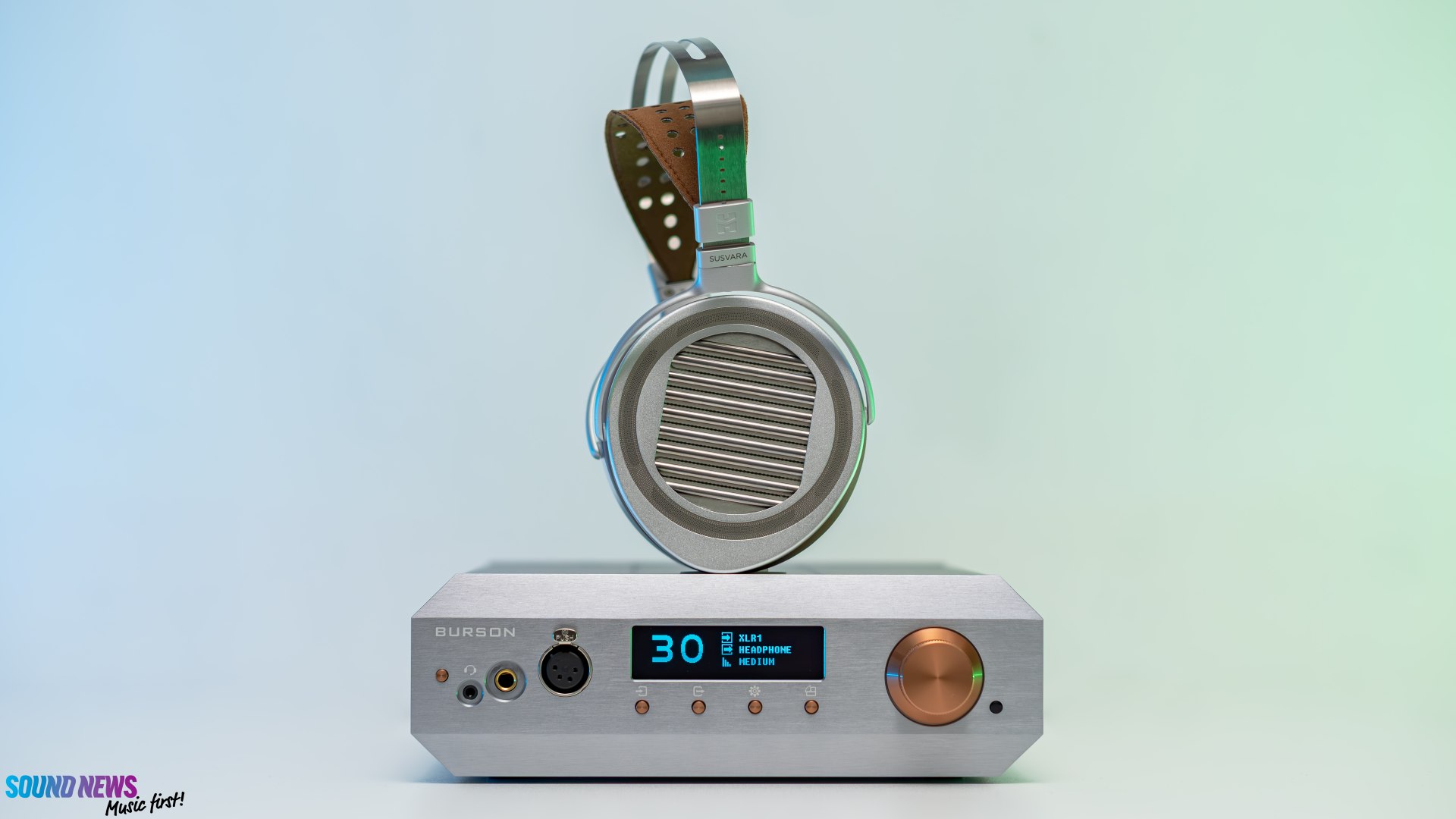
Frequency Response
VII. Bass
Once you start feeding them high-quality power, ideally biased into Class-A operation without negative feedback… only then will the Unveiled show off a tour de force, beginning with the bass region. Before we talk about its quantity, I want to draw your attention to its quality! The bass is never only about a thump, a kick, and a smile on your face. The bass also hides tons of intricacies, additional layers that come in waves, and even extra details you never knew were there. Not many headphones can show off these traits. From my collection, I would say that both Susvara models, together with the T+A Solitaire P, are the only ones that dissect the bass region into tiny pieces, letting you enjoy a much higher-quality bass. Starting with its attack, sustain, and then decay. Once properly fed, the sound improves tremendously, and from a somewhat shy, dry-sounding headphone, the Unveiled will now become a mighty Amazonian warrior, unleashing her fury on curious ears.
Seriously now, the bass is nothing short of spectacular; it’s of a higher quality than what we got on the original Susvara, discerning extra overtones and subtleties with such ease that I no longer need to close my eyes. Listening to the naked truth puts zero stress on your brain; you no longer need to strain or focus with your eyes closed. Everything is just sitting there in front of you, ready to be unmasked, including the bass region.
On less impressive headphone rigs, the bass can drop in volume and become ethereal, lacking body and weight, and I totally understand why some might feel underwhelmed by its rendition. I’ve got a similar feeling at various HiFi shows…but not at home, where I find them quite beastly when dropping tremendous amounts of sub-bass energy. True, they are not exactly super-fun and incredibly punchy like the Solitaire P or the Kennerton Arkona, but with the correct set of tools, they aren’t that far off.
We don’t have a 20 Hz roll-off. Well, we don’t have a roll-off ANYWHERE in the bass, so once energized with lots of amperes, the bass becomes jumpy, impactful, and so delightful. So, no! It’s not ethereal, and it’s not lacking body or weight; quite the contrary, if you have the will to experiment.
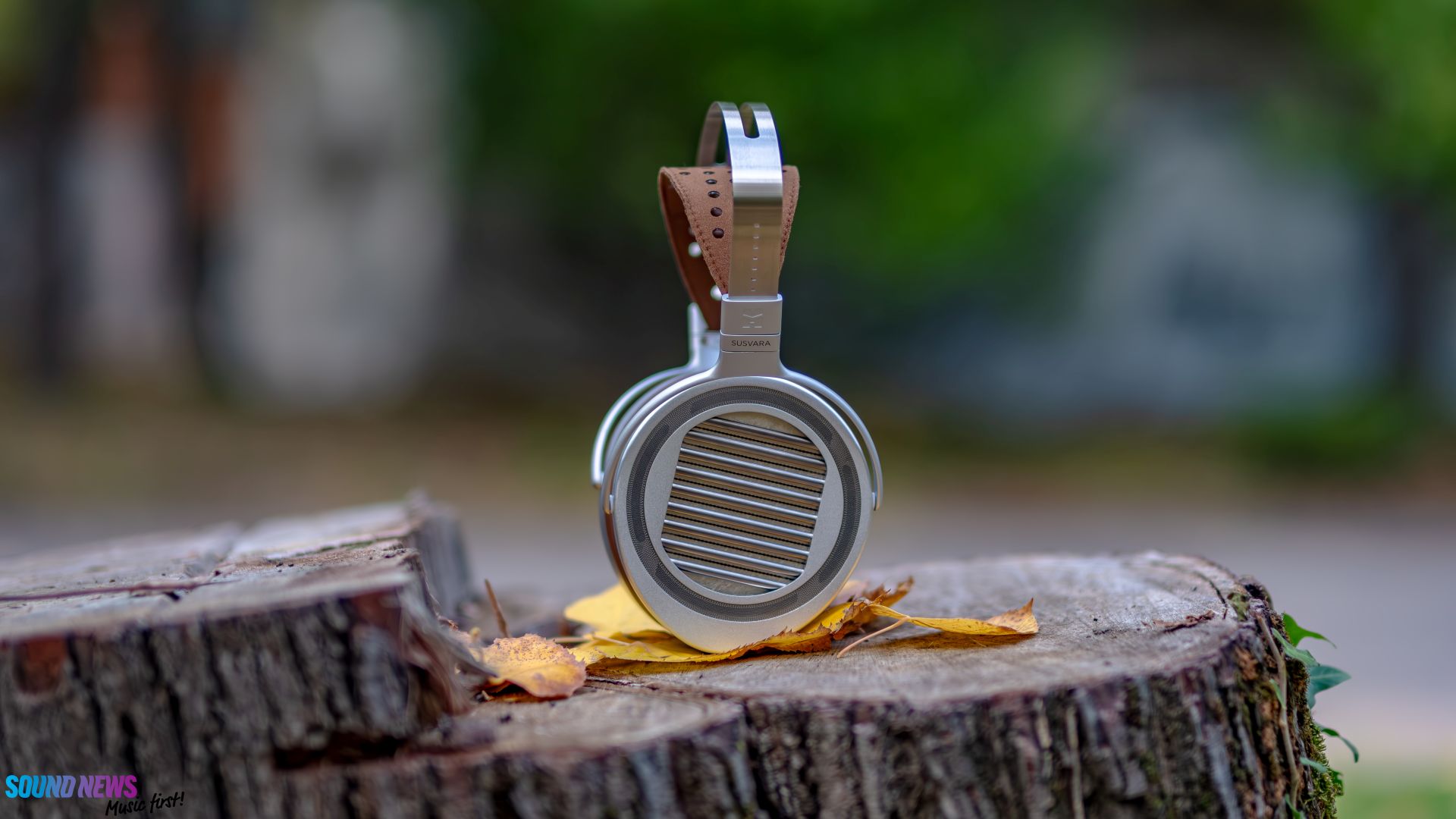
VIII. Midrange
When I’m thinking about HiFiMan as a HiFi brand, I’m not instantly thinking about a sweet midrange, to die for vocal performance, colorful overtones, or thick textures. I’m usually thinking about an immaculate technical performance, down to the most minor details, that will impress a hardcore audiophile. However, everything changed when the original Susvara revealed its nature, and I still believe that, from the entire HiFiMan portfolio, nothing has come close to it. If you are trying to win our hearts as a HiFi brand, molding a midrange-focused sound should be a quintessential task, since most of the sounds we encounter in real life come from this region. You can impress a young music lover with a strong low-end delivery or a budding audiophile with a sharp treble delivery, but you will impress a connoisseur only with a natural midrange delivery, and that’s what HiFiMan did with the original Susvara.
Some might argue that we have a lower tonal density on the Unveiled and sound’s liquidity is no longer as apparent, but I don’t follow the same beliefs. When resolution rises and distortion is nowhere to be found, only then can you hear the music in all its glory. Sometimes I want to hear every little thing that positively or negatively affects my mood, and that’s what happens with the Unveiled. Put it on reference recordings, and the midrange will bloom once again, revealing the beautiful side of this hobby. But engage overly processed and heavily compressed tracks, and what was smooth and organic will now become more challenging to digest. The original Susvara could sweeten things up, especially the voice and acoustic instruments. There was a bit more emotion attached to them, and I feel that the Unveiled variants have some of that too, but to a minor degree. I’m my eyes, the Unveiled isn’t a direct improvement in every way, and the only thing that still keeps me going back to the original Susvara are the “to die for vocals”.
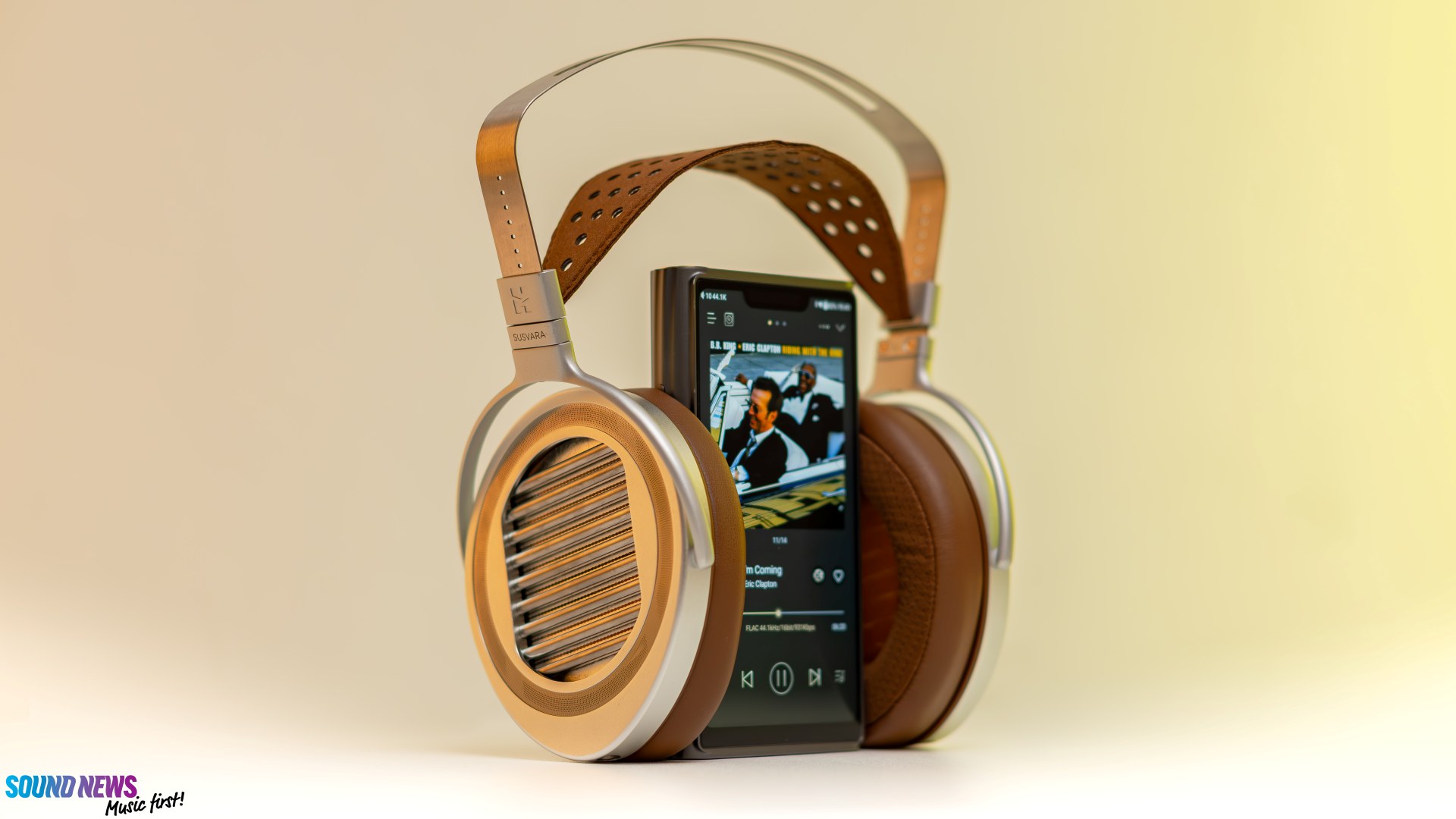
IX. Treble
And here we have it, everyone. The only region where others are trying to catch up, and no, I’m not discussing the measured frequency response in here. I’m discussing how much detail and inner texture these can offer versus anything else on the market. There’s almost an electrostatic vibe oozing from these once hyper-realistic tracks as they start playing. They will spoil you for life, as you can’t unhear and forget the things that were loud and clear on the Unveiled. While I still have a wall of headphones and many others are still added to the collection, once I listen to music on the Unveiled for a couple of hours, everything else feels muddy, unrefined, raw, and quite mid-fi. The treble region feels like an open book on these, because you have no idea what will follow next. An album you’ve known for more than 30 years? Keep an open mind at all times, as these might point you towards additional nuances with a nonchalant ease. The trebles are of the highest quality and can only be described as crystal clear, with a surgical precision on the leading edges – when the music asks for it.
The only problem I see with such a brutally honest presentation is that system matching becomes crucial. Don’t expect a miracle to happen when mating these with an affordable delta-sigma DAC powered by a switching power supply, followed by an op-amp-based amplifier…that’s not how Susvara was supposed to sound. A careful system matching is thus mandatory, and as I have started this article, you build a system around the Susvara Unveiled, not the other way around. If you need a recommendation, go with a software-defined single-bit DAC (the newest Audiobyte SuperVox DAC comes to mind), and if you want extra smoothness on top and sweeter mids, nothing does it better than a really nice R2R ladder DAC (Gustard R30 comes to mind, but the sky could be the limit here). As for amplifiers, remove all op-amp-based amplifiers (they don’t have the bandwidth, nor the necessary current output) and delve into the world of fully-discrete amplifiers (transistor-based) or transformer-coupled tube amps. You’ll be much happier with these, and they sound much tastier.
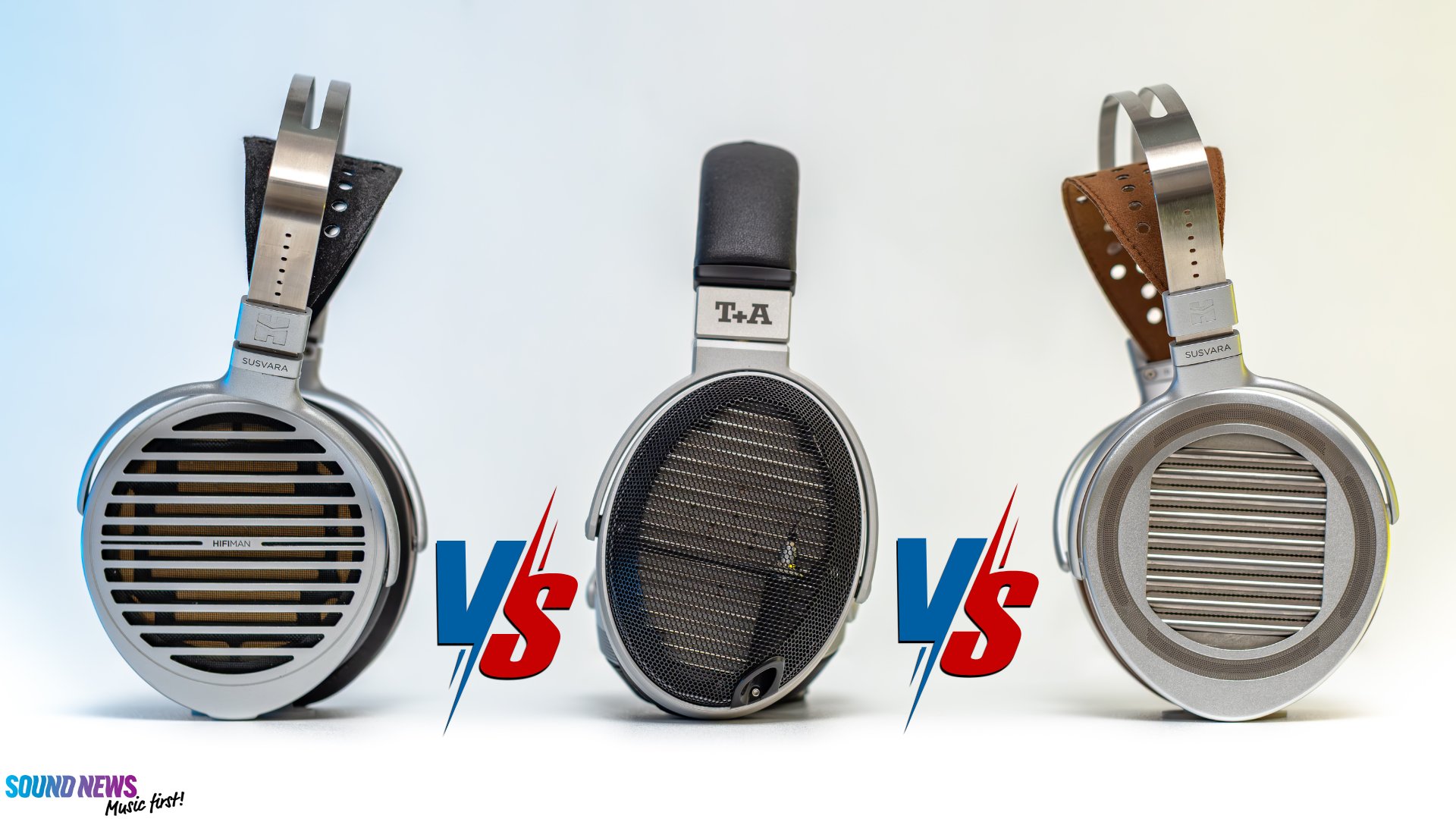
X. Comparisons
Susvara Unveiled is currently the most expensive non-electrostatic headphones, so I’ll compare it only with top-of-the-line cans.
HiFiMan Susvara Unveiled ($8000) VS Susvara OG ($6000) VS T+A Solitaire P ($6900)
Most of you are dying to know how the OG fares against their newest and most excellent, but the bloodiest battle will rage against the Solitaire P, which I reviewed last year. All three are considered to be upper-echelon cans having little to no compromises, and that’s where I’m going to focus most of my attention.
I won’t mumble much about their looks and build quality, but I will say that the Solitaire P uses much thicker CNC machining; they feel more solid in the hand, exuding an aura of German Engineering once you start tinkering with them. These are the most solidly built headphones I have ever tested, and I like this part a lot. They feel indestructible, and I also like their unconventional design. They are built to higher standards than both Susvara variants, with one caveat: they are heavier and put more pressure on my ears and the top of my head, so I find them less than perfect for long listening sessions.
Both Susvara models look more fragile, and if I factor in the veil system, the one that might fail first would be Unveiled. Both HiFiMan creations look nice and cozy, and you can easily recognize them from afar, earning top points for comfort, too, as I can wear them all day long.
Conducting blind tests was impossible, since I could immediately feel the added weight of the Solitaire P, meaning that I compared them the old-fashioned way. I’ll be as objective as possible, without taking my personal preferences into account. My opinions are always my own, and that isn’t going to change. If you’re an avid reader, please enjoy the showdown.
All my comparisons are done in the morning, after a hot shower, two puffs of Audispray, a hot coffee, and after volume-matching them at 90dB with the MiniDSP EARS. All these things are mandatory, as I know that my hearing and mood levels would be at their prime.
Sound-wise, the most true-to-life and accurate-sounding headphone of the bunch is the Unveiled. If you combine the most linear frequency response with the most extended sub-bass and treble delivery, and an immaculate transient response, you start to realize that the only limiting factors might be your equipment… or, worse, your ears. If you want to hear all and everything, every small nuance or imperfection, this is the better headphone. There’s a little bit more when comparing it directly with the Solitaire P and considerably more when comparing it with the OG. The sound’s transparency goes off the charts, and so does detail retrieval on the micro scale. There isn’t a sound that can hide in the shadows, but it will put a thin blanket on the original Susvara. This is where the original Susvara shows its age, sounding less transparent and with less impressive micro-detail. The Solitaire P sits in between, but it’s so much closer to the Unveiled as it is to the OG, and there are times when I’m reaching for the Solitaire P, as I know that I won’t miss that much information once music drops on my playlist.
If the fun factor is more important than mere technicalities, then cheer up a little, as the Solitaire P is pulling ahead. The bass region is nothing short of spectacular on these, and if you enjoy bass-heavy tracks, then I don’t remember hearing anything remotely close to them. These get funky even on mediocre headphone rigs, and the best part? They don’t demand active nuclear reactors to be fully driven. These deliver somewhat stronger dynamics even on portable devices than the other two. The music is just more powerful, more visceral; it moves you literally, and in no time, you might start dancing. The sound becomes a lot more physical with these, and this is the sole reason I bought them in the first place. Longing for solo fun times? The Solitaire P might be just the right partner.
The tone and timbre, however, is quite a different story altogether, and this is the only part where I felt that the Solitaire P is slightly lagging behind. The German Engineering wins when closely inspecting the headphones, but the tone and timbre? It’s almost soulless in a direct comparison. The midrange, in particular, feels fragile, gentle, and soothing on the original Susvara, and this part alone might be the only reason people still keep using these. The vocals vibrate with a higher level of emotion on the OG, and the strings have almost magical properties… zinging like no other headphones do. The Unveiled is almost on the same level, but the added resolution makes the mids less appealing, like the spotlight moves away from the big spectacle, and it’s now shooting hundreds of rays into the corners, revealing hidden secrets no one suspected of hearing. The mids “feel” as inviting and as refined as they do on the original, but the added clarity and the faster diaphragms remove the extra vibrations still audible on the OG. The result? A clearer vocal performance and a somewhat shorter decay of the musical instruments that removes a tiny portion of their “musicality”. The Solitaire P can’t beatify the vocals, nor does it add sweetness or refinement with any air instruments; you can, however, infuse more life into them with the help of transformer-coupled SET amplifiers (ideally rocking 300B tubes), so not everything is lost.
The sound staging and imaging might feel like a double-sided coin, but not in a direct comparison with the T+A. The Solitaire P has larger drivers and cleverly positioned magnets that don’t get in the way of the acoustic waves. The result? One of the most open-sounding headphones I’ve experienced, pretty much on par with the Erzetich Charybdis, and I find them more impressive than the Sennheiser HD800. These are truly spectacular if you like to play with live recordings, but they aren’t exactly as layered and deep-sounding as the Unveiled is. The greatest HiFiMans will impress you the moment you start counting the sound’s layers and the distance between the soloist and the drummer. The stage deepens as if stereo tunes were swapped with binaural vibes, and these effects can get magical on several occasions. I’d say we have a tie; T+A paints larger soundscapes, and the Unveiled pulls you deeper into the mix. The original Susvara? Decrease the stage size by 10% and the depth by another 25% versus the Unveiled, and you’ll get the sound staging capabilities of the original gangster. Still great…but not outstanding.
Last but not least, please don’t overlook their sensitivity. Forget impedance; nobody checks that anymore. Sensitivity dictates which amplifier you’ll need to meet their upper performance metrics. The Solitaire P is easier to drive from these three… but in a direct comparison with other planar headphones such as the HE1000 Unveiled or the Meze Elite, the T+A Solitaire P would require more power than the others. Still, the Solitaire P can be easily driven by a few high-end digital audio players (HiBy RS8, R8 II, FiiO M17, Shanling M9, M8T, and many others), and they work exceptionally well with a few DAC/Amp combos. The Susvara OG will demand more power; for example, on a Burson Soloist Voyager set to high gain, and on the 4-pin XLR output, I need to crank the volume by five clicks to achieve a similar volume (SPL). And if the original Susvara hits my head, I need to put in an extra five clicks to reach a similar sound pressure level. What’s a volume position of 25 on the Solitaire P (equaling a volume of 90 dB), goes to 30 on the Susvara Unveiled, and up to 35 on the OG. If you’re saving for the Susvara Unveiled, I would suggest getting two piggy banks instead of one, as powerful, fully discrete amplifiers usually cost a pretty penny.
And here we have it, everyone. If you already own a dedicated head-fi battle station, the Susvara Unveiled will pull ahead in every technicality known to man. Resolution, transparency, transient response, linearity, and distortion – all of these were simply unmatched, and that’s probably one of the reasons why the Unveiled costs as much.

My Conclusions
After living with the HiFiMan Susvara Unveiled for months, feeding it, pampering it, occasionally cursing it…I’ve realized this isn’t a pair of headphones you own. It’s one you commit to. The Unveiled doesn’t want to be your casual listening companion; it wants to be your teacher, your therapist, your high-maintenance muse. It asks for your best: your finest DAC, your cleanest amplifier, your patience, your curiosity, and maybe even your sanity. In return, it offers something few headphones can: a window into music so clear that you stop thinking about sound and start remembering why you fell in love with music in the first place. At the end of the day, it doesn’t whisper sweet nothings like many headphones do; it tells you truths you weren’t ready to hear.
At first, that honesty can sting. The Unveiled doesn’t flatter bad recordings or lazy gear. It exposes flaws, both in your system and in yourself. In the way you listen and expect music to behave. But once you learn to meet it on its level, it rewards you with something extraordinary: the sound of effortlessness. Music stops being a performance behind glass and becomes something you can almost touch, breathe, and see.
If you’re chasing comfort, convenience, or instant gratification, the Unveiled will expose your shortcuts and look at your USB dongles and Bluetooth thingies like it’s an insult. But if you treat it right, if you build a system around it, not the other way around, only then does it reward you with a kind of truth that makes everything else feel slightly artificial. It’s like switching from streaming to Super Audio CDs, or from an over-compressed track to a live acoustic session, all happening inside your head. Suddenly, there’s air, texture, soul, and a pulse that reminds you that music isn’t meant to be consumed, it’s meant to be felt.
Compared to the Susvara OG, the Unveiled feels like a friend who went on a spiritual retreat, came back wiser, lighter, and more direct. It keeps the magic but trades a bit of warmth for insight. The OG sings from the heart, while the Unveiled speaks from the truth. And against the mighty T+A Solitaire P, the Unveiled proves that sheer German engineering power isn’t enough to dethrone an idea perfected through obsession. The T+A punches harder, but the Unveiled reaches deeper into the mix, into your headspace, into your sense of what real means.
Is it worth eight grand, though? Well, that depends on whether you see this hobby as a destination or a journey. The Susvara Unveiled isn’t just a purchase, but more like an initiation into the elite Headphoneus Supremus club.
At the end of the day, some headphones make you smile, and some headphones make you think. The Unveiled does both, though not always in that order. It’s the kind of gear that can make you question your setup, your playlists, and possibly your life choices. But it also reminds you why it was all worth it. When the lights are low and that familiar track starts playing, and you hear something new, something alive, you’ll know the Susvara Unveiled did precisely what it set out to do. It made you listen again. Truly listen.

And that’s precisely why the HiFiMAN Susvara Unveiled earns our highest honor, the Editor’s Choice Award. This distinction is reserved for only one product per category each year, and the Unveiled claims it without hesitation. Are these the best headphones I’ve heard in 2025? For me, that’s a resounding yes.
Of course, as with all things Hi-Fi, there’s always a touch of subjectivity in any review, including this one. I’ve done my best to stay objective and speak from both passion and experience, but your ears, your system, and your preferences might tell a slightly different story. That’s the beauty of this hobby: it’s personal. So, if you ever get the chance, do yourself a favor and give the Unveiled a proper listen. You might understand why I’m so smitten.
A huge thanks to HiFiMan for graciously providing the Susvara Unveiled for this long-term loan & review. They’re now available directly from HiFiMan’s web store for $8,000 with worldwide shipping and full support should anything go sideways.
If you decide to take the plunge and join the ranks of the Unveiled faithful, I’d love to hear from you — drop me a comment below and share your impressions. Until next time…Sandu, signing off.
PROS:
- One of the best-looking HiFiMAN headphones to date
- Super comfortable to be used long term, with zero strain or listening fatigue
- The stock cables are now much better looking, and they still lack microphonics
- ULTIMATE levels of detail retrieval and transparency
- E-stat like transient response, gets lightning fast in an instant
- Unleashing crazy dynamics and a low-end worthy of the Thunder Gods on potent amplifiers
- Much better sound staging capabilities versus the OG, offering laser precision focus on anything playing in the background
- Holographic and 3D sounding even with less-than-ideal recordings
- They can get incredibly tight and controlled, but you’ll need a high-bias Class-A amplifier for that to happen
- They cover the audible frequency response in full without rolling off any of the frequency regions
- Less finicky about the amplification and could work great even out of portable devices
- Tactile, palpable, textured, and rich-sounding, exposing the tiniest nuances buried deep in the recording
- Extremely technical sounding in every metric possible
- Quite probably the best planar magnetic headphones of today
CONS:
- Pricey!
- Still difficult to drive
- The veil system opens the door for potential driver damage
ASSOCIATED EQUIPMENT:
- Digital Transport / Roon Server: Rockna Wavedream NET 4 Tb
- Network Switch: Ansuz PowerSwitch D3
- DACs: Rockna Wavedream Reference Signature
- Headphone Amplifiers: Feliks Audio ENVY Susvara Edition, Cayin Soul 170HA, Gold Note HP-10 DELUXE, Burson Soloist Voyager MAX
- Preamplifier: Chord Electronics Ultima PRE2
- Power Amplifiers: Chord Electronics Ultima 3 (X2)
- Full-sized headphones: HiFiMan Susvara Unveiled, Susvara OG, T+A Solitaire P, and many others
- Loudspeakers: Raidho TD 2.2
- Interconnects: Crystal Cable Monet XLR (X2)
- Speaker cables: Crystal Cable Monet 2.5m
- Power Cables: Crystal Cable Monet (X4), Roboli Stars Power (X2)
- Ethernet Cable: Crystal Cable Monet (X2)
- HDMI Cable: AudioQuest Dragon
- Balanced Isolation Power Conditioner: KECES IQRP-3600
- Audio Racks: Woodyard Suspended Triple & Baby Modular
